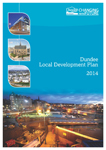1250
Type of resources
Available actions
Topics
INSPIRE themes
Keywords
Contact for the resource
Provided by
Years
Formats
Representation types
Update frequencies
status
Scale
Resolution
-
While Royal Mail (RM) allocate and maintain postcodes for the purposes of delivering mail, National Records of Scotland (NRS) create and maintain digital postcode geographies to support the production of high quality statistics. This dataset provides the boundaries for each live postcode (e.g. KY7 6DG) in Scotland. NRS publish these boundaries twice a year as part of the Scottish Postcode Directory (SPD) which should be considered the definitive source for postcode geographies in Scotland. The SPD also details a range of higher geographies to which each postcode is assigned. Note the published version of the SPD does not include Royal Mail information on Delivery Point Count (DPC), Delivery Point Count Non-Residential (DPCNR) or Household Count (HC). Those interested in this information should enquire with geographycustomerservices@nrscotland.gov.uk.
-
Catchment areas of all mainstream schools within the Dundee City Council administrative boundary. Catchments are available for Primary and Secondary, Denominational and Nondenominational schools. Catchment areas are used to help place children resident in that area into their catchment school. Children are allocated Priority 1 status for their catchment school. Other children not resident in that catchment area are required to make a placing request for entry into that school. Catchments updated to reflect changes outlined in Education Committee reports 175-2015, 177-2015 and 176-2015 which come into effect in 2016.
-
A designated area where certain pollutants exceed certain levels and therefore need a Detailed Assessment. In PKC nitrogen dioxide and particulate matter have been identified.
-
The Perth and Kinross Employment Land Audit is prepared annually to provide up to date and accurate information on the supply and availability of employment land for business and industrial use within the Perth and Kinross Council area. This audit has been prepared from information provided in the Local Development Plan and through the monitoring of planning application approvals.
-
While Royal Mail (RM) allocate and maintain postcodes for the purposes of delivering mail, National Records of Scotland (NRS) create and maintain digital postcode geographies to support the production of high quality statistics. This dataset provides the boundaries of postcode districts which are the next hierarchical level above the postcode sector, represented by the outward code (first part of a postcode). For example, if the individual postcode is EH12 7TB, then the district of that postcode is EH12. NRS publish these boundaries twice a year as part of the Scottish Postcode Directory (SPD) which should be considered the definitive source for postcode geographies in Scotland.
-
A survey issued by the Scottish Government to establish the extent & state of vacant & derelict land in Scotland. Local Authorities return data to the Scottish Government for checking.
-
While Royal Mail (RM) allocate and maintain postcodes for the purposes of delivering mail, National Records of Scotland (NRS) create and maintain digital postcode geographies to support the production of high quality statistics. This dataset provides the geometric grid references (or centroids) of postcode districts which are the next hierarchical level above the postcode sector, represented by the outward code (first part of a postcode). For example, if the individual postcode is EH12 7TB, then the district of that postcode is EH12. NRS publish these grid references twice a year as part of the Scottish Postcode Directory (SPD) which should be considered the definitive source for postcode geographies in Scotland.
-
Planning applications currently open for consultation, as published in the Council's weekly list.
-

Buildings are listed by Historic Scotland for their special architectural or historic interest on behalf of the Scottish Government. The aim of listing such buildings is to protect or enhance their special character by affording them statutory protection. The principles for listing buildings are fairly complex and there is no right of appeal against the Scottish Governments decision to list a property. Listed buildings are listed in 3 categories - A, B and C. Category A listed buildings are of national or international importance. Category B listed buildings are of regional importance. Category C buildings are of local importance. A building¿s listing covers its interior, exterior and ¿any object or structure fixed to a building¿ or which falls within the curtilage of such a building, forming part of the land since before 1 July 1948.
-

The Local Development Plan for Dundee contains the spatial strategy that will guide future development up to 2024 and shows which land is being allocated to meet the City's development needs and where new development should and should not happen. The Plan contains policies and proposals covering the principal land use issues in the City and will provide the context in which decisions on planning applications will be made. The Local Development Plan will be reviewed at five yearly intervals to ensure that an up to date plan is in pl ace at all times to guide future development in the City.
 Metadata catalogue
Metadata catalogue